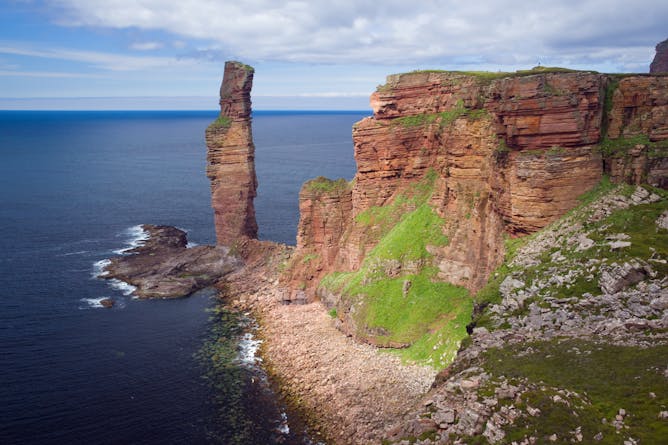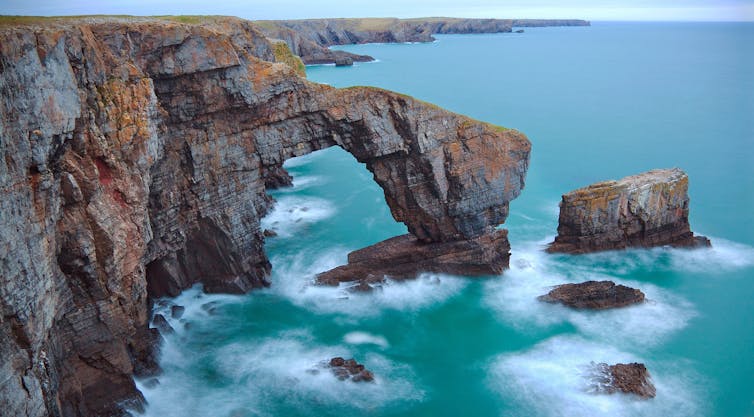NEXT WEEKS EVENTS
3rd to 9th July 2017
The following is an extract from Bristol Geology Calendar
More details can be found in the Calendar and on the web sites of the relevant Society or organisation.
Monday
When23 May – 9 Jul 2017
WhereGeology Gallery, Museum in the Park, Stratford Park, Stratford Road, Stroud, Gloucestershire, GL5 4AF. (map)
DescriptionExhibition: The Watery World of the Ichthyosaur
Tuesday 23 May - Sunday 9 July | Admission Free
A mini exhibition in the Geology Gallery
Taking our very own fossil baby Ichthyosaur, freshly cleaned and conserved, as its centrepiece, this temporary display will allow you to explore the underwater environment that this creature lived in. Discover what an Ichthyosaur ate for lunch, as well as the other creatures and plant life that shared its watery world. With artistic representations of how the Ichthyosaur lived around 190 million years ago, plus the fossilised remains of the Ichthyosaur and its contemporaries this exhibition is not to be missed.
Supported by the The Curry Fund of the Geologists Association
WhenMon, 3 July, 19:30 – 21:30
WhereWynstones School, Stroud Road, Whaddon, Gloucester (map)
DescriptionThe Geology of the Oceans past and present (including plate tectonics, environments, and current/develop
Tuesday
When4 – 5 Jul 2017
WhereTBA (map)
Description Evening Geology Course Field Trip
4th or 5th July
Volcanoes in action – their magmas and minerals Dr Paul Olver
Contact John 01886 888318
Cost £35
WhenTue, 4 July, 19:00 – 21:00
WhereSee website, separate leaflet, and/or by contacting Dave Green. (map)
Ashleworth, Staunton and Corse Lawn
This area, in the subdued topography of the Severn Vale to the north of Gloucester, shows considerable and surprising variations in relief, due to the influence of a few more resistant thin beds in the midst of a sea of weak mudstones and shales, of Upper Triassic to Lower Jurassic age. The resistant beds appear many times, partly due to gentle folding, and partly because of faulting; each time producing characteristic landscape. A further complicating feature is the presence of remnants of the former flood plains of the Severn, now dissected by erosion during and since the Ice Age
Meet at the roadside (park on verge) at the junction between the Upleadon/Newent road with the B4211 at SO 800 280
Stroud Museum - see Monday's entry
Wednesday
When4 – 5 Jul 2017
WhereTBA (map)
Description Evening Geology Course Field Trip
4th or 5th July
Volcanoes in action – their magmas and minerals Dr Paul Olver
Contact John 01886 888318
Cost £35
Stroud Museum - see Monday's entry
Thursday
WhenThu, 6 July, 19:15 – 21:45
WhereBath Royal Literary and Scientific Institution, 16 Queen Square, Bath (map)
DescriptionCarbon Capture and Storage (CCS) – demonstrating the safety and performance of underground CO2 storage by site monitoring
Professor Andy Chadwick, British Geological Survey
Underground storage of carbon dioxide emitted from fossil fuel combustion and other industrial processes offers the most credible way of achieving the deep reductions in greenhouse gas emissions agreed at last year’s COP-21 climate change conference in Paris.
The regulatory framework for underground CO2 storage has been set up via a European Directive. In this there is a regulatory requirement to prove that storage sites are not leaking, that their current behaviour is understood, and that stored CO2 will continue to be contained in the long term. Time-lapse monitoring at storage sites, using geophysical and geochemical techniques provides the means by which these quite challenging objectives can be met.
Industrial-scal
Stroud Museum - see Monday's entry
Friday
Stroud Museum - see Monday's entry
Saturday
Stroud Museum - see Monday's entry
Sunday
WhenSunday, 9 Jul 2017
DescriptionWest Somerset Coast Field Trip on July 9th 2017
Examine the evidence for a tectonic inversion on the West Somerset coast. leader: Dr Mark Anderson
More details to follow
Stroud Museum - see Monday's entry









